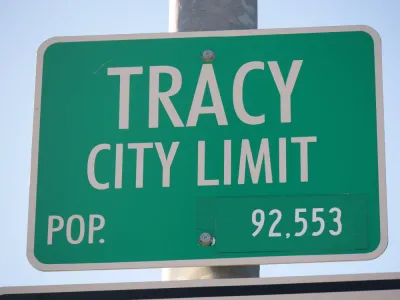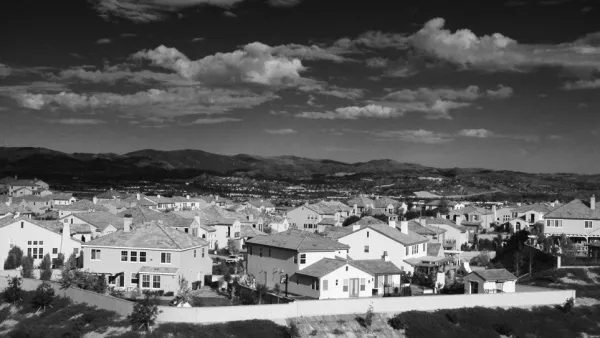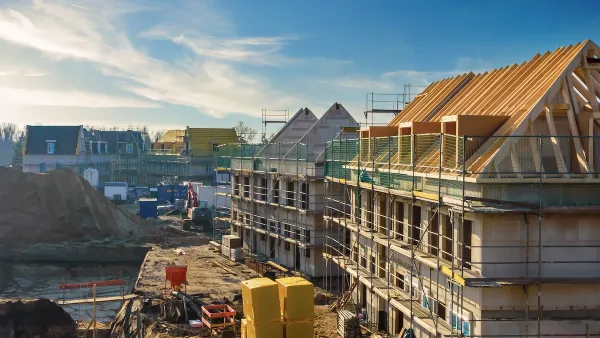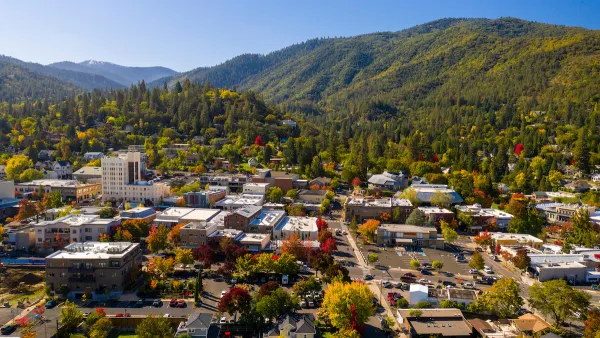Despite the environmental effects of exurban sprawl, Northern California's housing shortage is being alleviated on the extreme edges of the San Francisco Bay Area.

J.K. Dineen reports on a trend that has picked up where it left off with the subprime mortgage crash during the Great recession:
Even in the midst of a climate crisis, the Bay Area’s skyrocketing housing costs are pushing families into far-flung suburbs like Tracy. And the American dream of a single-family home coupled with cities’ restrictions on building multifamily rentals and condos means “exurbs” continue to thrive despite state and local officials’ recognition that they exacerbate climate change.
The example of the development Tracy Hills, located in the city of Tracy located over 60 miles east of San Francisco and 20 miles east of Livermore, is cited to exemplify the resurgence of exurban developments in the Bay Area.
The majority of buyers at Tracy Hills are families who work in the East Bay or Silicon Valley, but are priced out of those communities, said John Palmer, development manager for master developer Integral Communities Homes. Prices for the planned community of 4,700 homes start around $500,000 and top out just above $700,000 — well below the $850,000 median price of a single-family home or condo in the nine-county Bay Area.
Meanwhile the entire city of Tracy stands as a testament to the growth patterns of recent decades, according to Dineen. The population of the city has grown from 18,500 in 1980 to over 90,000 today. The population is projected to rise to 125,000 by 2035.
FULL STORY: Despite climate crisis, California continues to embrace exurban sprawl

National Parks Layoffs Will Cause Communities to Lose Billions
Thousands of essential park workers were laid off this week, just before the busy spring break season.

Retro-silient?: America’s First “Eco-burb,” The Woodlands Turns 50
A master-planned community north of Houston offers lessons on green infrastructure and resilient design, but falls short of its founder’s lofty affordability and walkability goals.

Delivering for America Plan Will Downgrade Mail Service in at Least 49.5 Percent of Zip Codes
Republican and Democrat lawmakers criticize the plan for its disproportionate negative impact on rural communities.

Test News Post 1
This is a summary

Test News Headline 46
Test for the image on the front page.

Balancing Bombs and Butterflies: How the National Guard Protects a Rare Species
The National Guard at Fort Indiantown Gap uses GIS technology and land management strategies to balance military training with conservation efforts, ensuring the survival of the rare eastern regal fritillary butterfly.
Urban Design for Planners 1: Software Tools
This six-course series explores essential urban design concepts using open source software and equips planners with the tools they need to participate fully in the urban design process.
Planning for Universal Design
Learn the tools for implementing Universal Design in planning regulations.
EMC Planning Group, Inc.
Planetizen
Planetizen
Mpact (formerly Rail~Volution)
Great Falls Development Authority, Inc.
HUDs Office of Policy Development and Research
NYU Wagner Graduate School of Public Service





























